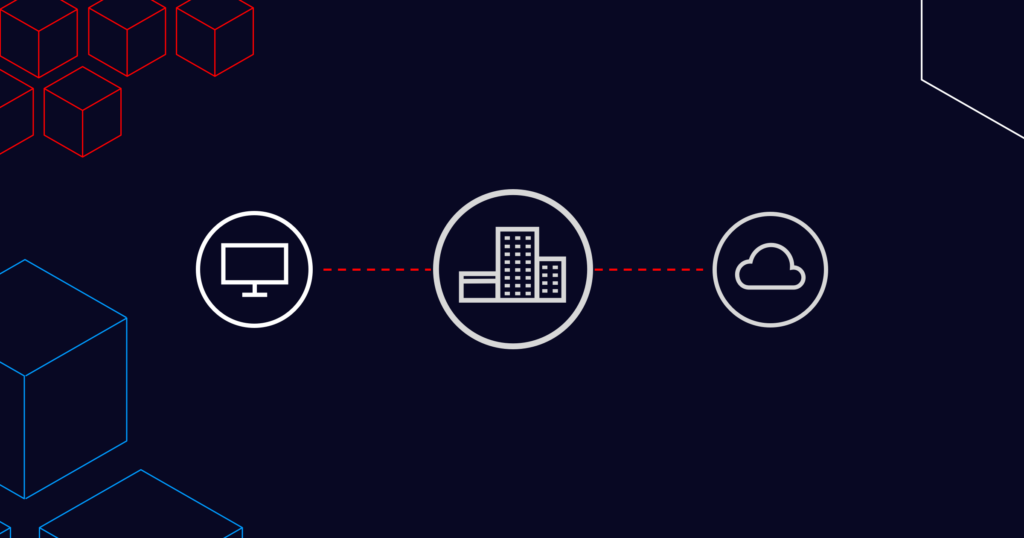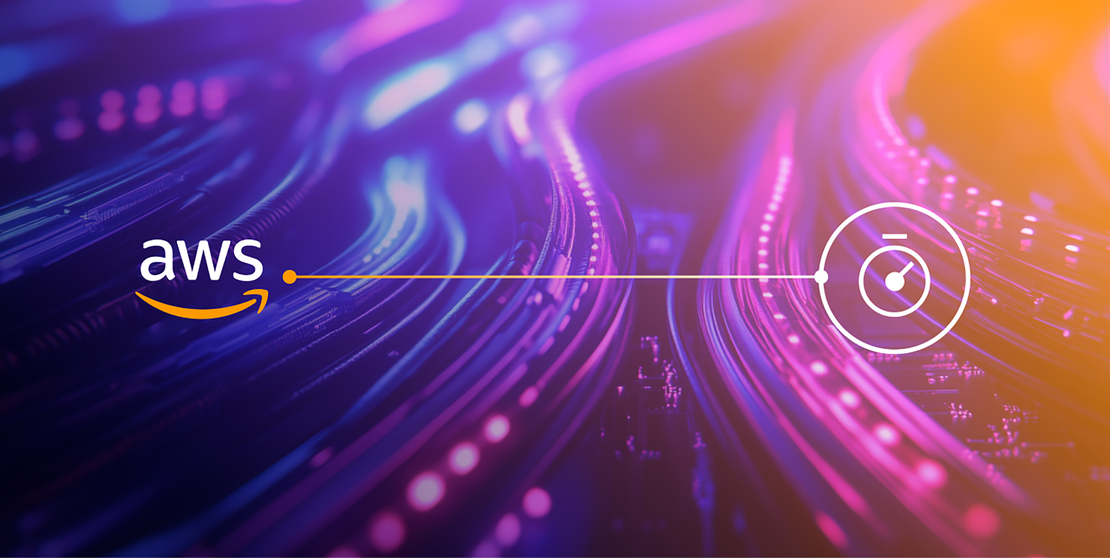
How to Automate and Orchestrate Your Network Effectively
- Cloud networking
- November 24, 2022
- RSS Feed
We explain how to make the most of automation, orchestration, and Infrastructure as Code tools for your highest performing network yet.
The Forrester* 2022 Cloud Connectivity Buyer’s Guide identifies five core criteria that IT decision-makers should consider when shopping for enterprise cloud connectivity solutions. Among them is the ability to implement tools that allow for both automation and orchestration of your network — but what exactly does this entail, and how can it be achieved?
As businesses continue to expand their footprint beyond data centers and into multiple physical and virtual locations—especially to support a global and distributed workforce—managing the integration and orchestration of applications becomes increasingly difficult. Enterprises are also grappling with the need for increased speed and performance to transfer more data than ever, as well as trying to navigate complex multicloud landscapes. These circumstances all add up to a pressing need for interoperable and self-sufficient cloud solutions.
According to Forrester, “ultimately, the entire network will need to be automated and orchestrated”*. With this in mind, this blog explores the various methods for network automation and orchestration, as well as their differing use cases and suitability for your company’s unique network needs.
Table of contents
- What is network automation?
- What is network orchestration?
- How does network automation differ from network orchestration?
- What is Infrastructure as Code (IaC)?
- How does network automation work?
- How does network orchestration work?
- The benefits of network automation
- The benefits of network orchestration
- Challenges of network automation and orchestration
- How to automate your network
- How to orchestrate your network
- Use cases
- What to look for in automation and orchestration tools
- How Megaport can help
What is network automation?
Network automation is the practice of employing software to automate network and security provisioning and management. By automating networking tasks like resource provisioning, network mapping, and network testing, a contemporary network automation platform can fulfill an IT department’s need for efficiency, flexibility, and consistency while deploying and maintaining both traditional and cloud-native apps.
Network automation eliminates the outdated and manual processes involved in managing networks, such as logging into routers, switches, load balancers, and firewalls to manually update configurations.
What is network orchestration?
Network orchestration is a means of managing your network and making changes swiftly through the abstraction of tasks. It’s a strategy that enables firms in rapid expansion to quickly respond to changing business requirements even when they have a large number of customers, locations, and dispersed network frames, without needing to alter their hardware.
As everything is handled by a user-friendly control console (a “single pane of glass”) that propagates changes automatically, users need not be concerned with the nitty-gritty of granular provisioning. Security settings are managed by the control software, allowing for total control of the network from your orchestration software.
Many cloud-based service companies are providing orchestration capabilities to add value to their existing offerings to attract more users and become a one-stop shop for enterprise networking.

How does network automation differ from network orchestration?
While they share a handful of similar core functionalities and use cases, network automation differs from network orchestration. Network orchestration can be thought of as a more advanced level or “the next step” of automation, as it “manages high-level sequences of inter-dependent tasks across multiple systems”, whereas automation handles more low-level, independent “if this then that” tasks.
Orchestration services entire processes or series of tasks across the network, while automation entails a single, often linear, run of a particular task without the need for manager intervention or monitoring. While automation can be programmed through scripts, orchestration requires representational state transfer (REST) interfaces such as application programming interface, commonly referred to as APIs.
We share three easy ways to modernize your cloud network in our blog.
What is Infrastructure as Code (IaC)?
Infrastructure as Code (IaC) is a core DevOps methodology that forms part of continuous delivery. It allows for the managing and provisioning of infrastructure—such as networks, virtual machines, load balancers, and connection topologies—through code, therefore removing the need for tedious and complex manual processes. It means that DevOps teams can collaborate using a standardized set of practices and tools to deliver applications and the infrastructure that supports daily business operations.
IaC can prove a valuable technique for network automation and orchestration efforts by enabling the automatic provisioning of infrastructure, which in turn can reduce costs, increase speeds to deploy, improve consistency and reliability across the network, and reduce the risk of human error.
How does network automation work?
Network automation assists in managing resources and services by allowing IT administrators to configure, scale, and integrate infrastructure and applications automatically and behind the scenes, removing the need for manual user intervention across a variety of tasks.
By using programmable logic on devices’ command line interfaces (CLIs), programs can dynamically perform pre-instructed, automated actions such as filtering and bandwidth control. All devices within the network are then managed through a centralized control panel.
How does network orchestration work?
Network orchestration turns unique business needs into actionable tasks through a top-down view control panel. The orchestration software receives information that it then subsequently responds to and acts on with the administrator’s preferences in mind, and completes the task (or multiple interrelated tasks at a time) without the need for user preparation. Orchestration is commonly used across multicloud infrastructures to support the reallocation of resources.
The benefits of network automation
As the two processes are similar in a handful of ways, there is some overlap among the benefits and challenges of network automation and network orchestration. But generally, they can be deduced as follows.
- Effective, controlled resource overheads — resources can be scaled up and down per project, improving performance and optimizing costs. Managers have improved oversight of where their resources are going, their security settings, and which processes have been automated. IT staff resourcing is also optimized.
- Removed risk of human error — cumbersome manual networking processes can be prone to errors, so automating these processes heavily reduces risk of mission-critical issues.
- Redundancy — automated configuration can increase performance and reliability, therefore preventing network failure which poses a threat to not only enterprise data but also that belonging to customers.
The benefits of network orchestration
- Quick deployment and flexibility — because in most cases there is no need for service providers to manually set up or upgrade the network, deployment of orchestration tools is hassle-free. Businesses can upgrade their network configurations easily—typically through an online portal—as their unique needs change, whether that’s the addition of a new location or a change in network speed.
- Better user experience (UX) — network orchestration means providers can better deliver services securely and quickly to their customers, improving brand reputation and retaining customer loyalty.
- Keeping the environment in the “desired state” — this means that your network configuration is protected from being changed inadvertently (or intentionally), for example, if a human technician made an error when configuring code that could then crash the entire enterprise network system. Orchestration and moving towards IaC enables the system to identify such anomalies and alert technicians, or even fix them automatically.

Challenges of network automation and orchestration
- Complexity and cost — networks are intricate, and the investment required to implement automation or orchestration across the network may seem too difficult or costly to be worthwhile, especially for smaller enterprises.
- Customization — turnkey network automation does not exist, and it must be implemented gradually to effectively meet a company’s unique requirements. While this makes for a tailored experience, it means companies after an instant, one-size-fits-all solution may need to rethink their game plan.
- Resource allocation — deploying distributed systems natively can result in suboptimal resource utilization in regards to CPU, memory, and network resources dedicated to each service.
- Multi-tenancy — deploying and monitoring a handful of services is already challenging as is, but with the consideration of multiple tenants—each with their own security and network requirements—orchestration can become further complicated. IT managers need to ensure that the decisions from one tenant do not affect others in terms of performance or privacy.
How to automate your network
Use APIs to automate processes across your clouds
An open API (sometimes known as a public API) is an application programming interface that allows developers to customize a proprietary software application or web service. Like the general rules that comprise any computer program, APIs are sets of requirements that govern how one application can communicate and interact with another – which also lends them to being a key tool in improving your network security.
Open APIs are a huge help for developers because they enable them to automate processes across their multicloud. A recent study from MIT shows that a plurality of organizations are in fact adopting APIs as a key part of an incremental transformation journey. With customer expectations high, and real-time systems as essential as real-world highways, the thinking behind the use of APIs is to deploy parallel improvements that gradually take the place of incumbent systems, where constant maintenance and monitoring of individual network applications is needed.
For a company’s multicloud infrastructure, APIs can automate everyday tasks, freeing up staff to work on other projects. APIs can even be used to automate virtual cross connects (VXCs) – a point-to-point Layer 2 circuit between two of your network endpoints. APIs can even automate VXC data rates based on time of day, traffic usage, or event-driven needs, so organizations are not overspending on capacity or the resources that monitor such capacity.
The result is an up-to-date network with better visibility and easier management, leaving more time for network teams to focus on projects that drive your business forward.
How to orchestrate your network
TechGenix identifies three types of network orchestration:
- Policy-Based Automation (PBA);
- Software-Defined Networking (SDN); and
- Intent-Based Networking (IBN).
Each method suits differing use cases and offers various benefits for enterprise networks across all industries.
1. Policy-Based Automation (PBA)
Policy-based automation controls a device’s policies by enabling enterprises to classify devices into groups or functions according to specific policy demands.
This automation method classifies devices into logical groupings or functions in accordance with the demands of the policies. A corporation can then prioritize its resources and customer demands based on these logical groups.
With a strong PBA, you can propagate policy across new devices and scale properly. You can also nest groups using a PBA and add subgroup policies as needed to rapidly provide teams with the resources they require. However, the majority of PBAs operate at the application layer, making them essentially useless for intelligent network management or for helping you develop a unified solution.
2. Software-Defined Networking (SDN)
Software Defined Networks employ an intelligent software-based controller and are a little more complicated than PBAs. With SDNs, you can also automate mundane tasks like managing loads and resources, thanks to this method’s ability to separate the control layer from the application layer. In order to monitor items like security settings, SDNs use automated functions and can also modify them to accommodate new hardware configurations.
3. Intent-Based Networking (IBN)
IBN employs AI to automate jobs on SDNs to ultimately improve their efficiency, which can improve your network’s performance and your business’ bottom line. Additionally, IBN systems utilize AI for resource management and optimization, service level agreement (SLA) control, and security modification to accommodate new devices.
If you have a wide area network that connects several sites and you need to increase encrypted data transfer through bandwidth control and media filtering, these options can be particularly helpful. Any repeated task that an administrator must perform is typically streamlined in IBNs to save you time. It also guarantees that nothing gets missed. IBN utilizes REST and functions on top of the operating system, allowing it to effectively interface with contemporary devices.
What are five essential features your enterprise network needs? Read our blog to find out.
Use cases
- Improve your quality of service (QoS) — by orchestrating better policies across applications, you can improve performance for end customers, therefore improving satisfaction and loyalty.
- Automate troubleshooting — for large companies, automation or orchestration can be beneficial when working in the background to identify network errors quickly and before they become detrimental. Services can not only identify issues, but can also provide dynamic solutions.
- Dynamically scale devices and infrastructure — to meet project-based needs quickly as well as support your business’ changing requirements, automation or orchestration can assist in upgrading network configurations.
- Provision network services routinely — businesses can address complex challenges previously faced when provisioning their network by simply implementing orchestration tools that will assist with provisioning.
Learn how you can simplify your network provisioning with NaaS.
What to look for in automation and orchestration tools
Within the 2022 Cloud Connectivity Buyer’s Guide, Forrester* put forth the following recommendations of criteria that enterprises should seek in network automation and orchestration services among enterprise multicloud infrastructures:
- Solutions that enable a multicloud environment — by abstracting the need for deploying physical equipment and prioritizing virtual infrastructure, users can enjoy greater interoperability and agility when migrating data between their cloud suites, which will support orchestration processes.
- Solutions that offer open APIs — seek solutions that offer application programming interface (APIs) and adapters for seamless communication between your network.
- Solutions that help realize a Virtual Network Infrastructure (VNI) vision — VNI heavily emphasizes software and binds the technology ecosystem, connecting on-premises infrastructure to the cloud, and from businesses to customers. Take advantage of this by looking for solutions that connect the wide variety of technology elements in the extended enterprise and support Network Function Virtualisation (NFV) (such as virtual routers and SD-WAN device hosting) for an improved automation and orchestration experience.
Additionally, tools should encompass some or all of the following characteristics and features:
- Device inventory — software should have the capacity to retrieve device inventory data, including vendors, operating systems, and serial numbers, either directly or via an API.
- Device-, vendor-, and environment-agnostic — as corporate networks typically operate through multiple vendors, tools should be device, vendor, and environment agnostic for better interoperability and subsequently improved automation and orchestration.
- Context-, config-, and state-aware — applications should verify network parameters before performing any orchestration operation. This ensures that network changes provide the expected result without introducing any inconsistencies that could derail orchestration processes.
- Logging, backup, and restore — software should provide a history log of all network activities for visibility and troubleshooting purposes. It should also support backups in the event of network failure for data restoration.
- Single pane of control — by providing network admins a centralized dashboard to manage operations across the infrastructure, users can more easily control automation and orchestration processes between software and clouds.
How Megaport can help
For a company’s multicloud infrastructure, APIs can automate everyday tasks, freeing up staff to work on other projects. If you’re using a cloud-to-cloud router like Megaport Cloud Router (MCR), APIs can even be used to automate virtual cross connects (VXCs) – a point-to-point Layer 2 circuit between two of your network endpoints. Megaport offers a public API for access to all the services available through the Megaport Portal. You can use this API to automate your Megaport provisioning to save time and effort.
Our Megaport API allows customers to get even more control over their network by automating a range of Megaport-related processes and enabling the utilization of standard tokens in their network suite. Network as a Service (NaaS) also enables task automation through application programming interface (API) for better productivity, which reduces resource costs and improves your business’ scalability so you only pay for what you use.
Megaport is also proud to have its own Terraform module. With Megaport’s Terraform Provider, you can easily automate the provisioning and management of your Megaport resources, lowering deployment costs and reducing provisioning time by using Infrastructure as Code. You can use it right now to manage Megaport resources in the same way you manage compute and storage from the big cloud players.
The Megaport Terraform Provider supports the resources required to configure these networks. And to make it even easier, Megaport has published example Terraform templates that create everything from simple data center connections right up to a hybrid cloud with AWS, Google, and Microsoft Azure networks all connected together.
Learn more about how to automate your multicloud with the Megaport Terraform Provider.
*Source: A Forrester Consulting Thought Leadership Paper Spotlight commissioned by Megaport, April 2022


